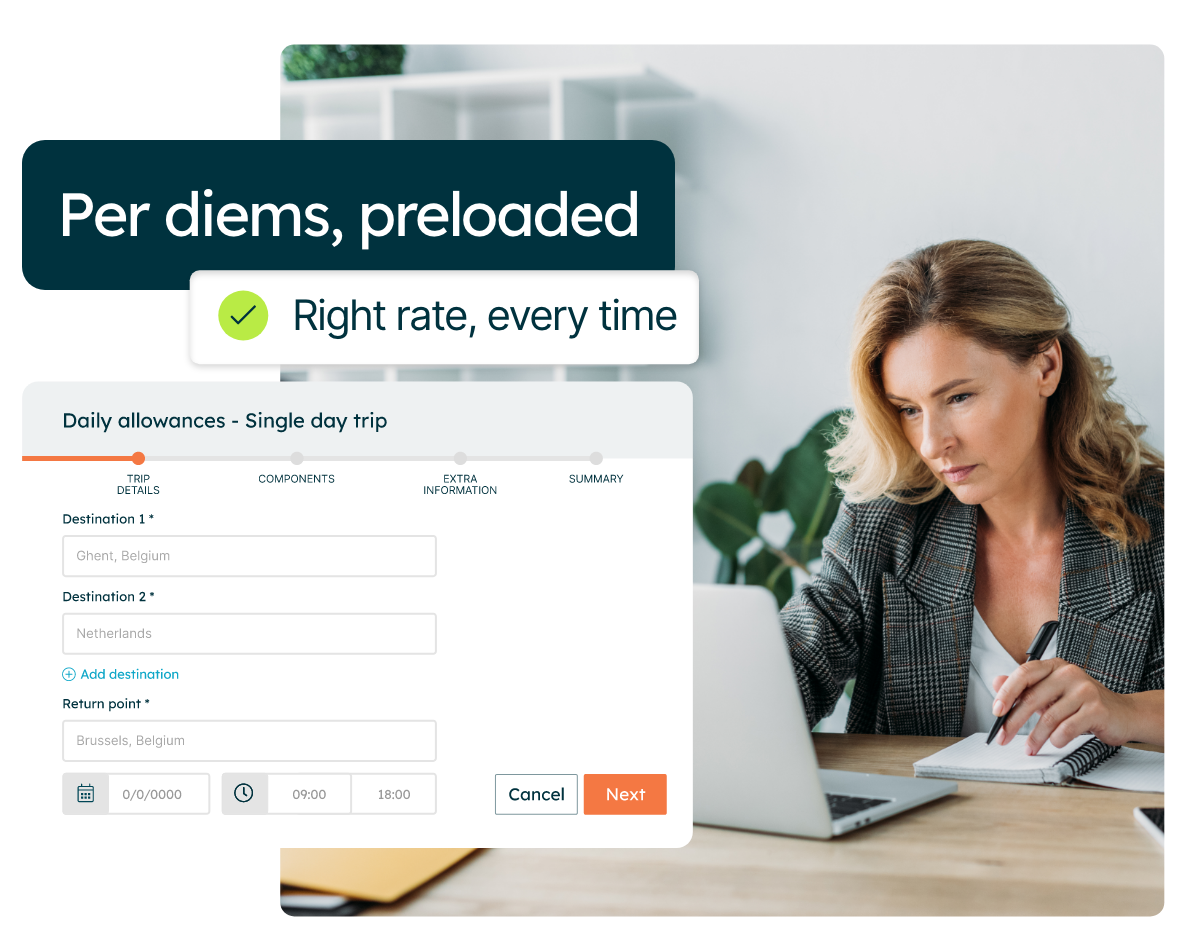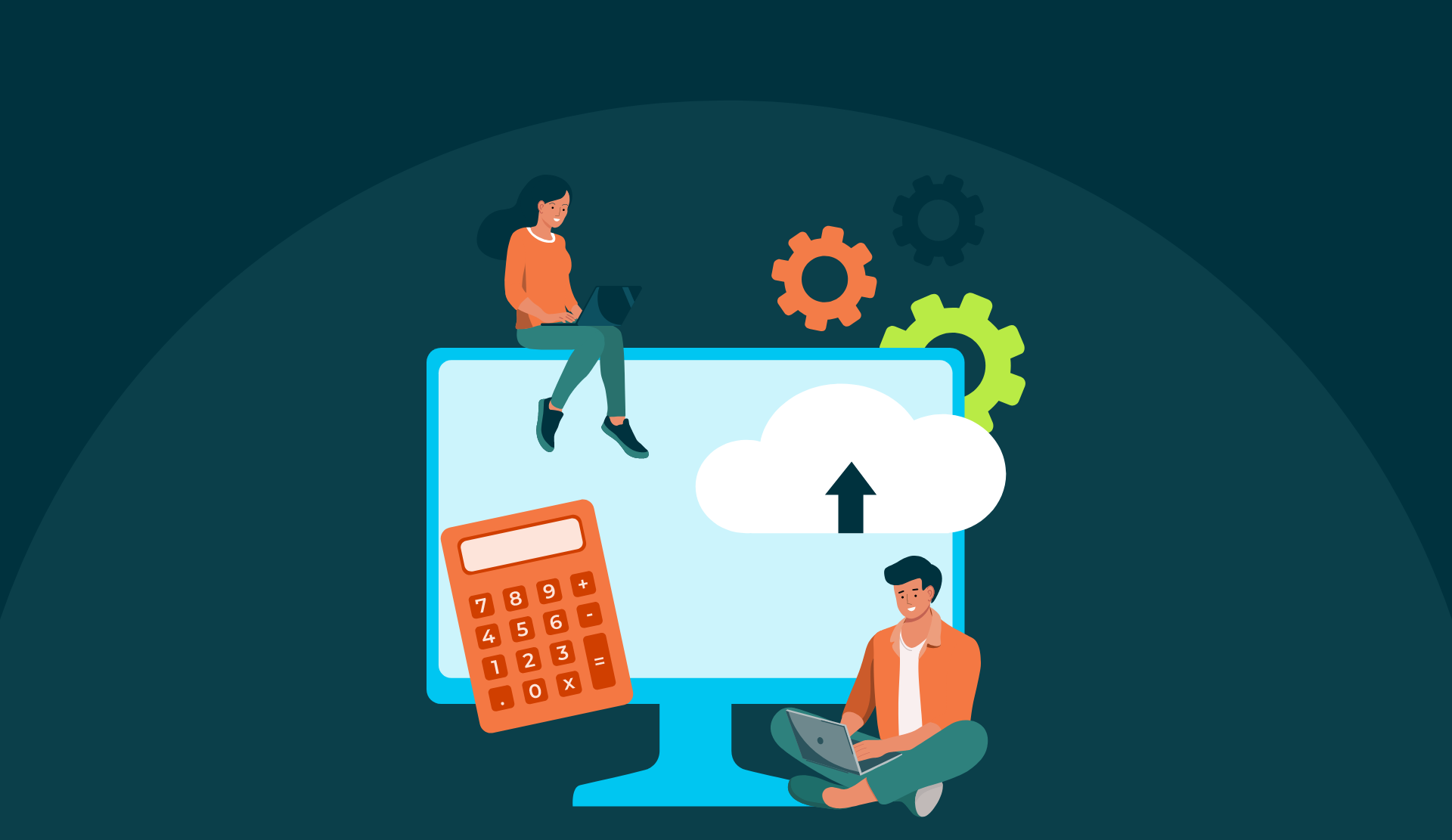5 Goals You Can Reach With an Expense Management Tool
Digital tools are changing faster than ever. With new, smarter, and more integrated solutions replacing legacy systems.
But when your company struggles to meet its goals regarding expense management, using an up-to-date tool becomes a priority.
You know your expense tool is outdated when...
- Your employees are drowning in paperwork, while controllers waste time correcting recurring errors in expense reports.
- Manual data entry and reconciliation are wasting valuable time.
- Business travellers delay submitting expenses, affecting cash flow and reporting accuracy.
- Reimbursements are delayed due to slow manual compliance checks.
- Your expense data lacks the clarity or depth to identify cost drivers.
To future-proof your expense management and empower your team, you need a tool designed to meet multiple demands – one that automates, integrates, and supports a better way of working.
Here are 5 goals finance managers can still achieve before 2025 ends
(with the right expense technology in place.)
1. Automate time-consuming processes
Does your expense system still rely heavily on manual input and spreadsheet approvals?
According to a Mobilexpense survey, 73% of employees want automated policy checks ingrained into their expense process, while only 42% have them.
Modern expense tools use automation to remove friction at every step: from receipt capture to policy enforcement.
Automated pre-approvals, real-time notifications for out-of-policy claims, and intelligent categorisation all help to free your team to focus on higher-value work.
As a result, faster expense cycles, more accurate reporting, and happier employees across departments.
2. Take control of employee spend
When costs continue to rise, finance managers need clear visibility and actionable insights to rein in employee spend.
A modern expense management system integrates with your broader finance stack. It tracks unusual activity and helps you proactively manage budgets.
With smart dashboards and AI-driven insights, finance teams can move from reactive to strategic, reducing costs without compromising on employee support or business impact.
In a Mobilexpense survey, only 27% of employees say their current expense management tool fully meets operational needs.
3. Increase expense policy compliance
Expense policies only work if they’re easy to follow. For travelling employees juggling client meetings and deadlines, reporting expenses often falls to the bottom of their list.
Cloud-based expense tools allow employees to upload receipts on the go and auto-categorise claims based on company policy.
This not only speeds up claim submission and reimbursement. But also ensures that your organisation stays compliant, without creating extra work for your team.
4. Improve employee experience and satisfaction
With no doubt, in 2025, staff expectations have evolved. Did you know 65% of finance professionals say automation has improved employee satisfaction?
Employees are automating a large part of their roles. They are also expecting internal processes to get a facelift.
People working at mid-size to enterprise companies no longer accept clunky systems and outdated processes, especially when it comes to managing their own money.
A poor expense experience can have a direct impact on employee engagement, retention and even productivity.
An intuitive, mobile-first expense management tool brings employees clarity, control and convenience. From real-time claim updates to transparent reimbursement timelines, the right system puts employees first.
But expense management is just one piece of the broader employee experience.
As our partner ADP notes in their blog on Human Capital Management (HCM): “our people are our greatest asset”. ADP’s research shows that HR professionals spend too much time navigating fragmented systems. Meanwhile they leave little time to focus on what truly matters: engaging and supporting employees.
By aligning expense management with your broader HCM strategy, you can create a more connected, transparent and empowering employee experience. Explore this integration in detail here.
“With an HCM system in place, all applications and approvals can be stored centrally, offering better organisational insights when analysed alongside other personnel information captured by the software.”
-ADP, "Defining HCM – what is it and why does it matter?"
5. Make data-backed, informed decisions
In today’s fast-moving economy, real-time insights aren’t a luxury – they’re essential.
Integrating your expense management tool with your ERP and HR systems enables smarter business decisions. You can instantly track spend by department, project or geography, identify recurring issues, and spot opportunities to renegotiate supplier agreements or adjust policies.
Modern systems provide predictive analytics and AI-powered recommendations, making it easier to stay ahead of the curve, rather than reacting after costs spiral.
“You have a holistic view of employee data... to assist in strategic planning. You can then use this information to identify areas that need work, key growth areas and even open doors to new ideas and strategies.”
-ADP, "Defining HCM – what is it and why does it matter?"%20Option%204.png?width=1260&height=950&name=Data%20%26%20Insights_Above%20fold%20(ENG)%20Option%204.png)
Ready to future-proof your expense management?
You’re constantly tracking trends and refining your operations to ensure your business stays competitive. In 2025, travel and expense will remain one of the top controllable costs for global organisations.
Accordingly, it is also one of the fastest to get out of hand.
With the right expense management tool, you’ll not only cut costs but also improve compliance, decision-making, and employee satisfaction. Whether your goal is automation, visibility or user experience, the time to act is now.
Let Mobilexpense help you reach your 2025 goals and lay the foundation for a stronger, more agile 2026.

On this page:
Your expense tool is outdated when...
5 goals finance managers can achieve before the year ends
1. Automate time-consuming processes
2. Take control of employee spend
3. Increase expense policy compliance
4. Improve employee experience and satisfaction
Share this
You may also enjoy
these related stories

Reducing Business Costs in 2025: A 3-Step Checklist

5 Reasons Why Declaree Makes Expense Management a Breeze for HR Managers



